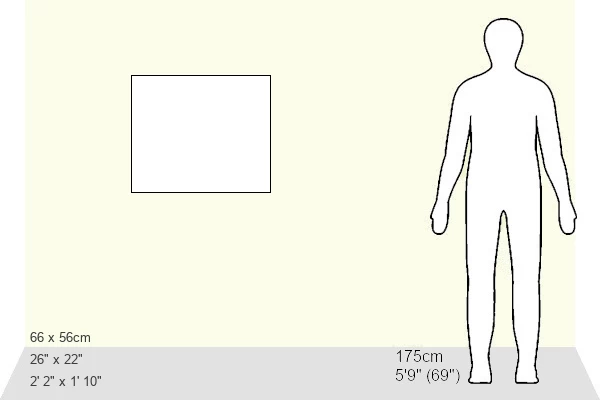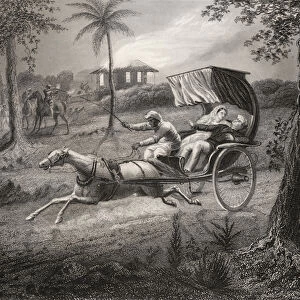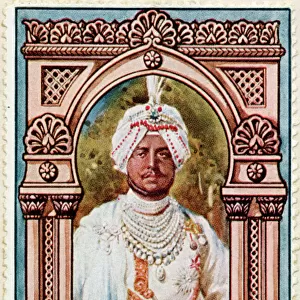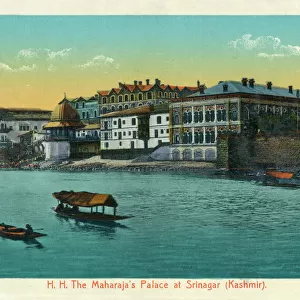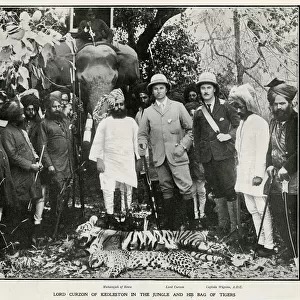Fine Art Print : Lord Canning and the Maharajah Rumbeer Singh of Cashmere
![]()

Fine Art Prints from Mary Evans Picture Library
Lord Canning and the Maharajah Rumbeer Singh of Cashmere
Lord Cannings return visit to the Maharajah of Cashmere. Interview at Sealkote on 9th March 1860 between the Maharajah Rumbeer Singh (Ranbir Singh) and his Excellency Lord Canning. Date: 1860
Mary Evans Picture Library makes available wonderful images created for people to enjoy over the centuries
Media ID 14343349
© Illustrated London News Ltd/Mary Evans
1860 Canning Cashmere Indians Interview Kashmir Maharaja Maharajah Return Singh
20"x16" (+3" Border) Fine Art Print
Step into the past with this exquisite Fine Art Print from Media Storehouse, featuring the historic meeting between Lord Canning and Maharajah Rumbeer Singh of Cashmere. This captivating image, sourced from Mary Evans Prints Online, captures the essence of diplomacy and power during the 19th century. Witness the interview between Lord Canning and the Maharajah at Sealkote on 9th March 1860, as they engage in a pivotal moment in the annals of history. Add this stunning piece to your collection and bring a touch of timeless elegance to your home or office.
20x16 image printed on 26x22 Fine Art Rag Paper with 3" (76mm) white border. Our Fine Art Prints are printed on 300gsm 100% acid free, PH neutral paper with archival properties. This printing method is used by museums and art collections to exhibit photographs and art reproductions.
Our fine art prints are high-quality prints made using a paper called Photo Rag. This 100% cotton rag fibre paper is known for its exceptional image sharpness, rich colors, and high level of detail, making it a popular choice for professional photographers and artists. Photo rag paper is our clear recommendation for a fine art paper print. If you can afford to spend more on a higher quality paper, then Photo Rag is our clear recommendation for a fine art paper print.
Estimated Image Size (if not cropped) is 50.8cm x 36cm (20" x 14.2")
Estimated Product Size is 66cm x 55.9cm (26" x 22")
These are individually made so all sizes are approximate
Artwork printed orientated as per the preview above, with landscape (horizontal) orientation to match the source image.
EDITORS COMMENTS
This photograph captures the historic moment of the second meeting between Lord Canning, the British Governor-General of India, and Maharajah Rumbeer Singh of Cashmere (now known as Kashmir), which took place on the 9th of March, 1860, at Sealkote. The image portrays the mutual respect and admiration between the two dignitaries. Lord Canning's first visit to Cashmere in 1858 was marked by the signing of the Treaty of Amritsar, which established British suzerainty over the region. During his second visit, Lord Canning sought to strengthen the alliance between the British and the Maharajah, recognizing the strategic importance of Cashmere in the context of the expanding British Empire in India. Maharajah Rumbeer Singh, also known as Ranbir Singh, was a formidable ruler who had successfully defended his kingdom against various invasions. He was known for his military prowess and his commitment to modernizing his kingdom. The interview between the two leaders was an opportunity for them to discuss matters of mutual interest, including trade, diplomacy, and defense. The photograph offers a glimpse into the rich cultural heritage of India during the British Raj, with Lord Canning dressed in formal British attire and Maharajah Rumbeer Singh adorned in traditional Indian clothing. The backdrop of the lush greenery and the serene surroundings of Sealkote Palace adds to the grandeur of the scene. This photograph is a testament to the complex and intricate relationships that existed between the British and Indian rulers during the colonial era. It serves as a reminder of the historical significance of Cashmere and the role it played in the larger political landscape of India during the 19th century.
MADE IN AUSTRALIA
Safe Shipping with 30 Day Money Back Guarantee
FREE PERSONALISATION*
We are proud to offer a range of customisation features including Personalised Captions, Color Filters and Picture Zoom Tools
FREE COLORIZATION SERVICE
You can choose advanced AI Colorization for this picture at no extra charge!
SECURE PAYMENTS
We happily accept a wide range of payment options so you can pay for the things you need in the way that is most convenient for you
* Options may vary by product and licensing agreement. Zoomed Pictures can be adjusted in the Cart.



